Waversa EXT Reference LAN Filter and Ethernet Cable
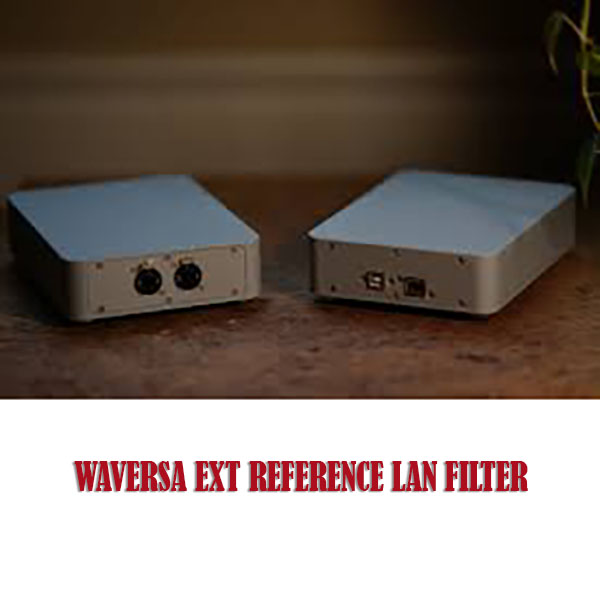
Waversa EXT Reference LAN Filter and Ethernet Cable
Getting the Harmonic Structure in Digital Streaming Done Right
 Most or all of us build and develop our audio systems over time. We put together our systems of various components, speakers, cables, and accessories depending on personal choice and the matter of relative financial resources. Very few of us would put in a complete system as is from scratch. Some of us go for complexity, while others are about simplicity.
Most or all of us build and develop our audio systems over time. We put together our systems of various components, speakers, cables, and accessories depending on personal choice and the matter of relative financial resources. Very few of us would put in a complete system as is from scratch. Some of us go for complexity, while others are about simplicity.
The matter of digital front end, streaming, Ethernet, and a network is just another system that supports our audio systems. It can start simple and develop over time into some complexity. In my background search, I first learned about Waversa EXT Reference LAN Filter and Ethernet Cable in creating a Roon Core-based digital streaming system. I remember thinking I should invest in the main components of the digital streaming front end before adding Waversa EXT Reference LAN Filter and Ethernet Cable. [which was twice the cost of my NAS drive, UpTone EtherREGEN Switch, and Uptone LS-2 lps I was using at the time]. I had planned to reevaluate the Waversa EXT Reference LAN Filter and Ethernet Cable when the foundation of my Roon-based streaming system was installed and baselined.
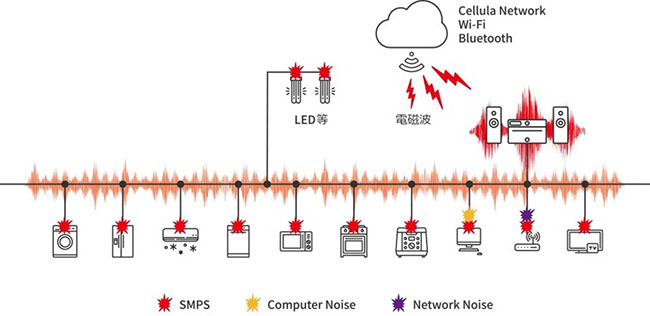
Audio is very susceptible to noise. Various noise sources adversely affect sound quality, but the noise significantly affecting computer streaming include EMI, RFI, and impulse noise. If you are an unbeliever in the noise generated by switch mode power supply (SMPS) from various sources, as noted above, please refer to this youtube video:
https://www.youtube.com/watch?v=tS7SvoT8Ivw&t=77s. This video details how the noise of all of the SMPS commonly found in our homes and neighbor’s homes can exist and can get in ac lines and pollute the sound of our audio systems.
RFI or impulse noise is a higher frequency range and less energy than EMI noise. In terms of music, it is a higher order in the overtone region (6k Hz to 20k Hz) that directly affects the timbre, spatial relationships/imaging, and emotional impact. It is possible to create a more musical and richer tone by reviving fine microdynamic detail in the high-order range, which is inaudible due to the influence of noise.
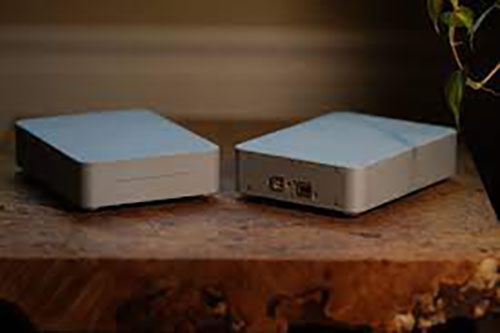
Waversa Systems is audio components manufacturer of innovative digital streaming products based in Korea. Waversa Systems recently developed LAN isolator products that remove RFI and impulse noise carried by the Ethernet cable and external sources with patented electromagnetic technology developed for military applications that are also patent pending. The use of electromagnetic fields in the Waversa LAN-EXT1 and EXT Reference LAN filter bridges the gap between CD playback, which inherently has inferior digital specifications, and computer audio streaming. The LAN Noise Isolator expresses the sophistication of the musical event’s interior structure.
The change in sound quality is not general, such as increased clarity because the noise is removed, as typically found in the lower-priced model, LAN-EXT1. With the EXT Reference LAN filter, music’s more refined details: microdynamics, reverberation, and the recording environment, which were obscured due to noise, now come to life. The Waversa LAN isolators are designed to not color or filter the sound at any audio frequency, unlike other filters in the marketplace.
The lower-priced LAN-EXT1 is small in comparison to the EXT Reference and can be almost held in the palm of your hand, whereas the EXT Reference has the dimensions of 6” x 8” x 2” (L x W x H) and is extremely heavy for its size. The cost of the fabrication of both components is related to addressing the eight signal lines found in all LAN cables, individually and actively, in terms of noise.
Before thoroughly evaluating the EXT Reference, I had to experiment with its placement in my system. I started with installing the EXT Reference directly after my Google Fiber router, which was not an optimized installation; the EXT Reference sounds its best when it’s closest to the destination device (and you want that Ethernet cable to be as short as possible as connected to the destination device). In my system, I found the most effective location for the EXT Reference to be between the EtherREGEN and the AfterDark Network Bridge. The AfterDark Network Bridge is the last Ethernet-based device closest to my Ayon Audio S-5 Network Player/Preamp/DAC digital source (the AfterDark Bridge is an I2S converter that runs on Linux with Roon control and reclocking). The review will also include swapping the LAN EXT-1 for the EXT Reference to evaluate the differences between both devices. I used the upgraded Waversa Ethernet cable in both cases for the entire review.
A Filter That is NOT a Filter
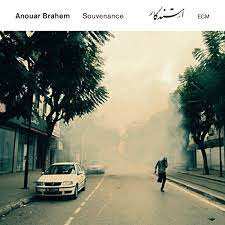 My listening area is 14ft and 10″ wide with a 9′ ceiling and has a nearly open back wall to 1500 sq ft of first-floor living area (my associated equipment is listed below).
My listening area is 14ft and 10″ wide with a 9′ ceiling and has a nearly open back wall to 1500 sq ft of first-floor living area (my associated equipment is listed below).
Lately, I have been getting my fill of whatever I can find that is offered on the ECM record label. I have rarely been disappointed in the quality of any digital recording from ECM. To be honest, they are the best at digital reproduction while offering various musical styles. I’ve been intrigued by the 24/96 digital download, Souvenance: Music for Oud Quartet & String Orchestra, composed by Anouae Brahem (ECM Records).
John Kelman of allaboutjazz.com writes: If we are, in the final analysis, the sum total of our experiences, then it stands to reason that the work of musicians (and other artists) is a reflection of the events that touch their lives. Souvenance means “recollection,” and if there is not, as oudist Anouar Brahem claims, “a direct link between my compositions and the events taking place in Tunisia,” then there’s little doubt that the album’s cover image—taken by Nacer Talef in the Tunisian capital of Tunis in January, 2011, showing man who appears to be running from an explosion and the wall of dust and debris rushing towards him—suggests, as Brahem also states, that he has, indeed, “been deeply affected” by the Tunisian (or Jasmine) Revolution that began in December 2010 and resulted in the ousting of longtime president Zine El Abidine Ben Ali a month later. But if such an upheaval might suggest music of explosive turbulence, it would seem that Brahem has instead chosen to create a suite of music that reflects the sadness…even the the despair…but, ultimately, the hope that such an event might realize for a better future.
Bringing bass clarinetist Klaus Gesing and electric bassist Björn Meyer back from his stellar The Astounding Eyes of Rita (the oudist’s last album, released by ECM nearly six years ago) together with pianist Francois Couturier, from the oudist’s sublime Le Pas du Chat Noir trio last heard on Le Voyage du Sahar (ECM, 2006), Brahem has created a quartet with his broadest palette since Khomsa (ECM, 1995) for Souvenance…a palette made all the larger with inclusion of the 18-piece string ensemble, Orchestra della Svizzera Italiana, conducted by Pietro Miantini. While the majority of Souvenance’s eleven-track, ninety-minute duration consists of new Brahem compositions (arranged for Orchestra Della Svizzera Italiana by the oudist and Johannes Berauer), a closing reprisal of Khomsa’s “Nouvelle vague” draws a direct line between the two recordings—though in this case Tõnu Kõrvits’ arrangement emphasizes the soft confluence of Orchestra Della Svizzera italiana’s strings rather than the repetitive piano figure that Couturier contributed to the original, which represented his first recorded encounter with Brahem. Brahem’s music demands much from himself and his fellow musicians; not in an overly virtuosic fashion, but more in the congregation to create a sound so soft, so subtly ornate that it is often less the sound of multiple instruments coming together but is, instead, about conjoining where, with tremendous concentration, each player takes his/her place in a more seamless unification.
That’s not to say there aren’t moments where individuality shines through; with players this exceptional it would be impossible for there not to be some feature time. Gesing takes a solo of visceral specificity before setting the stage for an equally impressive turn from Brahem on “Deliverance,” one of Souvenance’s more boldly dramatic pieces for the quartet alone, following “Ashen Sky.” Another piece without strings, “Ashen Sky” demonstrates Brahem’s marvelous ability to utilize the broadest possible dynamics to tremendous effect. Couturier seamlessly melds with the oudist as Gesing moves from breathy low register support to soaring upper range melodies.
The opening of the title track is defined by harmonic stasis, with Couturier featured over a glistening wash of strings further bolstered by Gesing—so buried in the mix that he’s felt more than heard—but when Brahem’s profound melody emerges, only to lead to a double time second half, “Souvenance” evolves into a potent feature for Brahem and Meyer that is one of the record’s many high points.
But with a book of music where form and freedom are not always easy to delineate—and the line between interpreting and adhering more strictly to form is even fuzzier—this is music that, in it’s largely hypnotic way, redefines how improvising musicians can interact with strings (or, perhaps, other orchestral timbres). This is also music whose bolder dramaturgy may be delivered with such attention to detail and dynamics that the slightest movement can become something more intrinsically powerful…and spiritual.
Because, at the end of the day, that’s what Souvenance truly represents: a spiritual narrative that explores the depths of emotion and the furthest reaches of the human condition…in the most understated yet clarified way possible. Brahem may take more time between recordings these days, but when the result is as moving as Souvenance, it’s clearly worth the wait as the years melt away and the music makes all other concerns irrelevant.
With the EXT Reference installed in its optimal location within the complex digital chain I call my system, this is as good as it gets in terms of homogeneity of the stereo soundstage. The speakers disappear, and the center image has a complete fill with improved image placement accuracy. In comparison, sans the EXT Reference, there was a discontinuity in the stereo image created by both loudspeakers, which was hard to imagine was possible given all of the reference level baseline components in my system. My system went from an ambient soundstage to something closer to a mix of ambient and pinpoint soundstaging. On Souvenance, you can hear every note, the silence between notes, and the decay of individual notes, which is critical in being connected emotionally to the music and the mood Brahem was aiming to convey. Musical involvement to the Max. So much of the detail, image depth, and resolution of micro dynamics is lost without the EXT Reference. I could now clearly hear the foot pedal action, the colorful overtones on the piano, and each instrument in the 18-piece string ensemble that was previously obscured sans the EXT Reference. Sans the EXT Reference, my system was bright and unnatural sounding, which I believe results when all of the harmful effects of electromagnetic and inherent LAN noise are carried along with the transmission of digital data packets. Swapping in the LAN EXT-1 was a revelation in my system but not near the complete transformation brought by the EXT Reference.
Continuum (ECM), composed by Nik Bärtsch’s Mobile band, is another 24/48 digital download that has been in my playlist as of late (in particular Modul 4). Nik’s numbered “Modul” pieces can be considered as templates rather than fixed and final compositions: he likens them to “basic training in martial arts, which can be adapted to all sorts of situations. My way of working is to create new contexts. Each piece plays with the idea of composition, interpretation, and improvisation, and is nourished by the same force, yet can create very surprising results.”
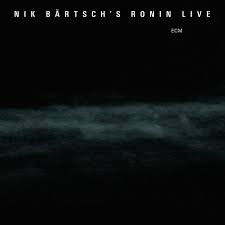 Carl Akermann of allaboutjazz.com writes: The timing couldn’t have been better. Following up on the stunning double-CD live outing, Nik Bärtsch’s Ronin Live (ECM, 2012), Bärtsch returns with his acoustic group, Mobile, for Continuum. With clarinetist Sha and drummer Kaspar Rast crossing over from Ronin, a new addition, Nicolas Stocker, on drums and percussion completes the core quartet. A string quintet augments three of the eight tracks, infusing a multiplicity of effects in the process.
Carl Akermann of allaboutjazz.com writes: The timing couldn’t have been better. Following up on the stunning double-CD live outing, Nik Bärtsch’s Ronin Live (ECM, 2012), Bärtsch returns with his acoustic group, Mobile, for Continuum. With clarinetist Sha and drummer Kaspar Rast crossing over from Ronin, a new addition, Nicolas Stocker, on drums and percussion completes the core quartet. A string quintet augments three of the eight tracks, infusing a multiplicity of effects in the process.
Mobile has been around for almost twenty years now with the Swiss pianist and composer, Rast and Ska as original members. They first released Aer (Tonus Music) in 2004 and there began the realization of Bärtsch’s unique vision of stylistically punctuating formalized musical structures while incorporating cross-cultural and cross-genre influences. The result has been music that is both disciplined and elastic with a literate quality and mesmerizing beat. “Modul 29_14” opens quietly; a repetitive pattern of notes and chords that eventually goes to a funky but similarly repetitive mode. In stark contrast, “Modul 12” is a minimal piece dominated by piano and brushes, the snare sometimes working against silence. “Modul 18” introduces the strings, though in a very subdued manner that adds a shadowy feeling rather than an obvious classical influence. Bärtsch flashes keyboard brilliance on “Modul 5,” a lightning-fast cascade of notes that quickly flickers out at its conclusion. The strings return on “Modul 60,” this time more clearly a chamber piece with a theatrical feel. The long “Modul 44” offers a similar ambiance but here, the tremolo of the strings builds and adds more tension as the piece progresses.
Again, the noise riding along the Ethernet signal that I was unaware ever existed was greatly reduced to improve the resolution of fine details across the entire frequency response (bass, midrange, high), timbre, spatial relationship/image, and dynamics. With the expansive soundstage, which was present on Continuum by adding the EXT Reference, the music had tranquility, and one might say the music made great strides in being analog sounding. The EXT reference in no way added its flavor to the sound, and nor did the music sound filtered. It is a critical component needed to complete my all-digital system, and I can’t imagine ever removing it from my system. If I had to describe the sound change brought by the EXT Reference in two words, it would be “musical coherence .”The improvements heard on Nik Bärtsch’s Mobile, Continuum, or anything else I played can’t be understated.
Conclusion
The improvements brought by the LAN EXT-1 and EXT Reference were heard and demonstrated. The impact of electromagnetic and impulse noise on the sound of digital systems is beyond what I ever imagined. Optimizing the position of these groundbreaking components is critical to experiencing their full effect. I know no other component that does what Waversa Systems does to improve network audio streaming.
Prior to the review, I was torn between adding another Ethernet switch with its cascading effect or adding a LAN filter. The overall cost and performance benefit of each approach must be considered. The LAN filter eliminates the need for another linear power supply, power cord, and DC cable to power the LAN switch, which in my system, would cost around $2100. The EXT Reference now becomes comparable in cost to a high-end Ethernet switch with all of its necessary accessories. I have chosen the Waversa EXT Reference to be an integral part of my digital streaming system and will nominate it for a Stereotimes Most Wanted Component award.
Highly recommended.

mike girardi
Specifications:
Waversa LAN-EXT-1 and CAT8 Ethernet cable, $1200
Waversa EXT Reference LAN Filter and CAT8 Ethernet cable, $3750
Waversa WLAN2-30P Ethernet cable, 30cm, $500
Website: https://www.kevalinaudio.com/
Mike’s Associated Equipment
Digital Front End
AfterDark Project ClayX Roon KARMANN Music Server
AfterDark Project ClayX Giesemann Rosanna Network Bridge powered by Farad Suoer3 lps
AfterDark Double Emperor Crown Master Clock powered by Farad Super3 lps
Uptone Audio JS-2 Power Supply for EtherREGEN and Google Fiber Router
Uptone Audio EtherREGEN
Ayon Audio S-5 Network Player/Preamplifier
Amplification
Ayon Audio Odin SET stereo amplifier III Build 4
First Watt SIT-1 monoblock amplifiers
Loudspeakers
Cube Audio Nenuphar loudspeakers
Cabling
Revelation Audio Labs Precept II CryoSilver Reference A/C Mains x 3
Synergistic Research Galileo UEF speaker cables with Blue Fuse treatment
Synergistic Research Galileo SX interconnect
Synergistic Research Galileo SX ac power cords, digital and analog
Synergistic Research Atmosphere High Definition Grounding cables x 14
Wireworld Platinum Starlight 8 Twinax Ethernet x 3
Accessories
Synergistic Research PowerCell SX
Synergistic Research HFTs on loudspeakers, Wide Angle HFTs on wall
Synergistic Research Active Grounding Block SE
Synergistic Research Black Box
Perfect Path Technologies Eden Gates
LessLoss Blackbody ambient field conditioner x 2
Marigo Audio Lab E3 Mystery Feet x 5 sets of 3
Marigo Audio Lab ZSD-31 and ZSD-41 SuperDots x 6 sets of 3
Custom-built maple wood rack with stainless steel support rod, sleeves, and cones
Marigo Audio Lab Window Tuning Dots
Herbie’s Audio Lab Preamp Ultrasonic tube dampers
Synergistic Research UEF Black duplexes
Synergistic Research Blue fuses
Still points Apertures x 6
Townshend Audio Seismic Podiums x 2 on Nenuphars
Furutech NCF Booster x 4
Furutech NCF Booster-Signal x 10
Oyaide WPC-Z aluminum mounting frame and carbon fiber faceplates
Two dedicated 20 amp AC lines using cryo-treated Romex
Stereo Times Masthead
Publisher/Founder
Clement Perry
Editor
Dave Thomas
Senior Editors
Frank Alles, Mike Girardi, Russell Lichter, Terry London, Moreno Mitchell, Paul Szabady, Bill Wells, Mike Wright, and Stephen Yan,
Current Contributors
David Abramson, Tim Barrall, Dave Allison, Ron Cook, Lewis Dardick, John Hoffman, Dan Secula, Don Shaulis, Greg Simmons, Eric Teh, Greg Voth, Richard Willie, Ed Van Winkle, Rob Dockery, Richard Doron, and Daveed Turek
Site Management Clement Perry
Ad Designer: Martin Perry




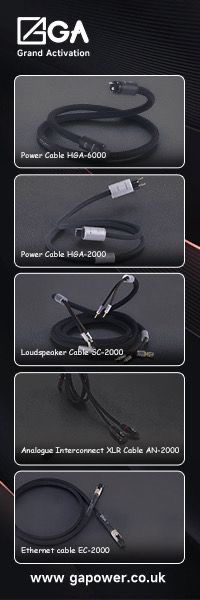


Be the first to comment on: Waversa EXT Reference LAN Filter and Ethernet Cable